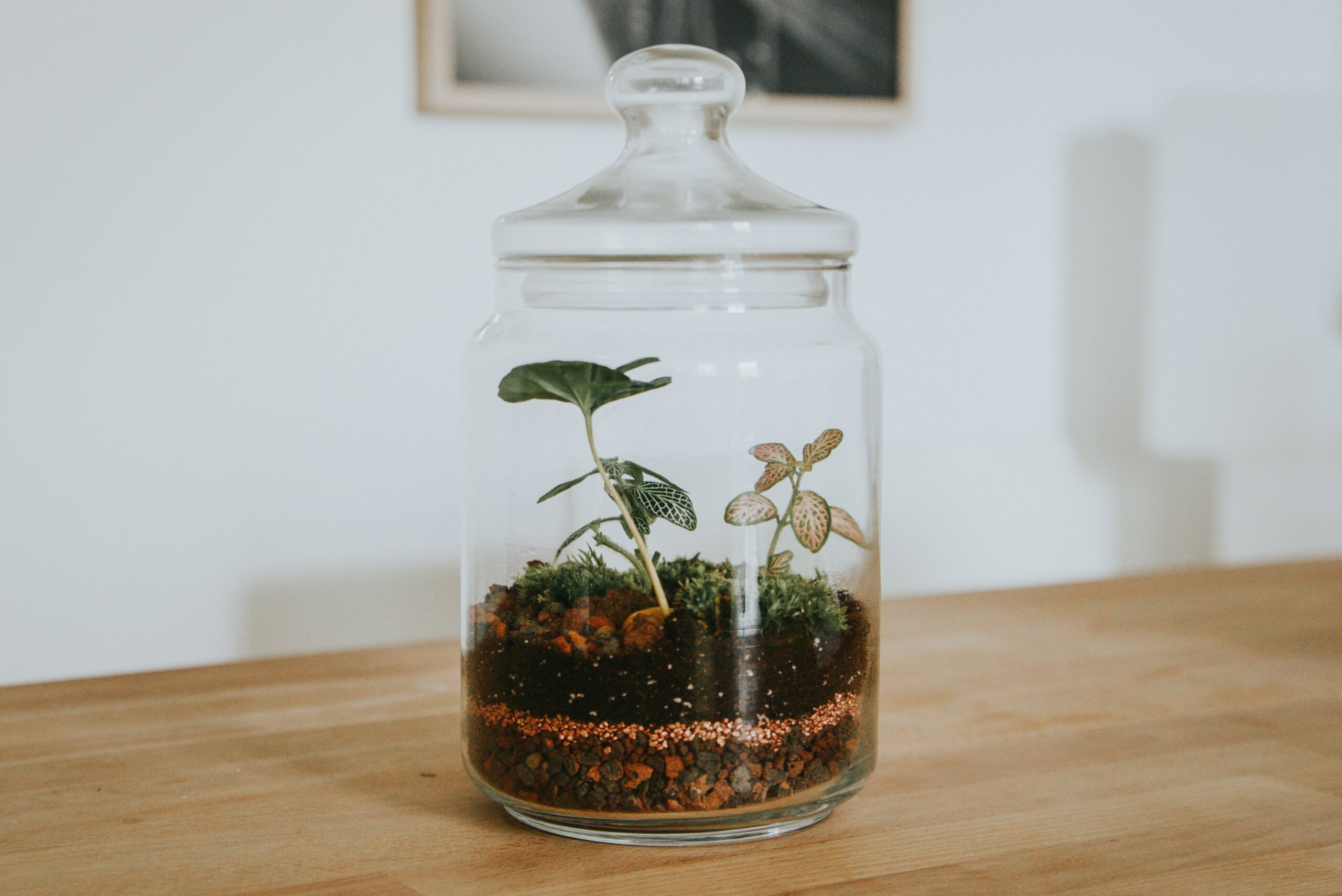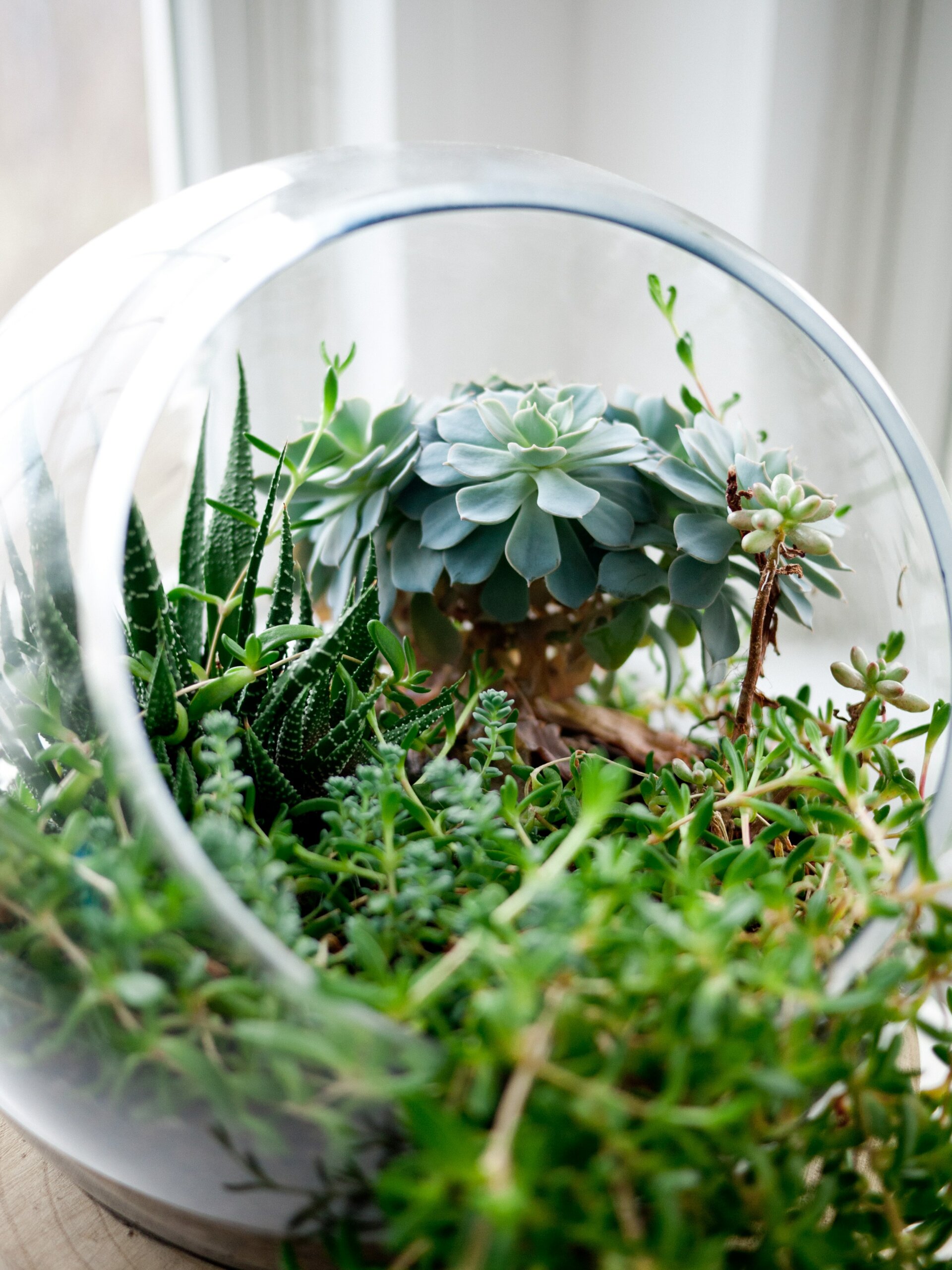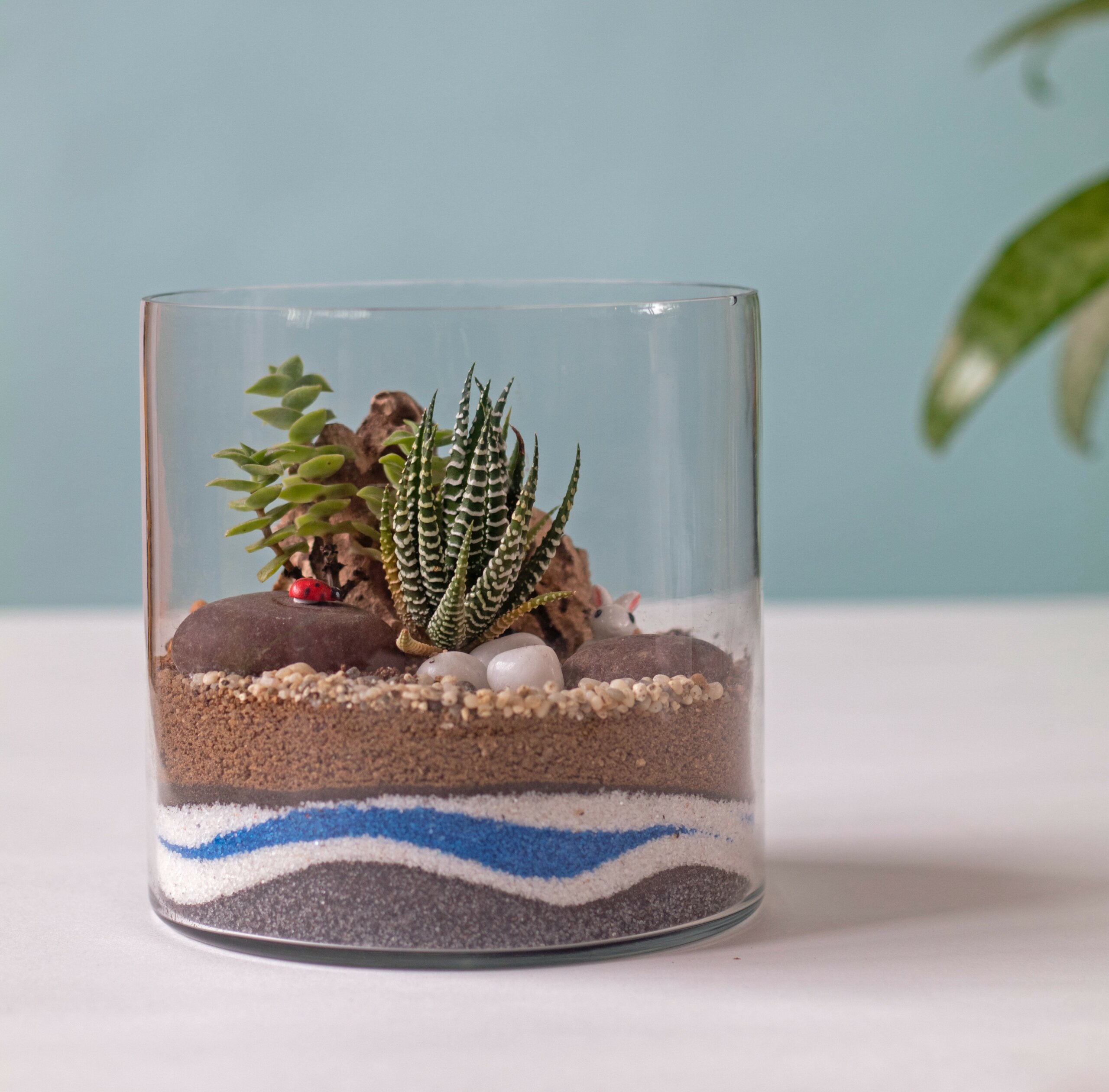What Is A Terrarium?
As a homeowner, you may be wondering what a terrarium is and how it works?
- A terrarium is a miniature garden that is enclosed in a container.
- It can be made from various materials, including glass, plastic, or metal.
Types of Terrariums
The most common type of terrarium is the closed terrarium, sealed off from the outside environment. This terrarium is low maintenance and can be kept on a desk or tabletop.
Terraria are also available in open form, which allows you to mix and match plants more efficiently. In a nutshell, closed terrariums have removable lids, and open ones don't.
No matter the type you choose, a terrarium makes a fun and interesting addition to any home.
What is a Terrarium Ecosystem?
A terrarium's ecosystem is a self-sustaining plant environment designed to replicate the natural cycles for adequate growth successfully.

How do Terrariums Work?
Closed terrariums can be termed indoor gardens in closed containers, and they offer a specialized environment conducive to the growth of plants. Courtesy of the transparent walls, plants will access light and heat. The closed container, coupled with the heat, forms a water cycle on a small scale.
This cycle comes into play since moisture from the plant and potting soil evaporates in the raised temperatures in the terrarium. The vapor condenses on the container's walls and ultimately drops back to the soil.
Consequently, the constant water supply creates the perfect environment for plant growth and keeps the plants from drying out.
Also, the light penetrating the transparent walls of the terrarium creates ideal conditions for photosynthesis, which is crucial to plant growth. Note that terrariums are self-nourishing when sealed, meaning they need minimal maintenance.
Types of Plants that are Ideal for Terrariums
You can grow an impressive array of plants in a terrarium, encompassing desert, woodland, and tropical plants. However, plants whose growth habit is low and dense are recommended. Avoid mixing plants with broad differences in temperature, water, and light requirements to be on the safe side.
When choosing plants for your terrarium, avoid plants that grow too rapidly or too large since they'll take over the whole space. Pruning the overgrowth will only take you so far, and it can become cumbersome to replant overgrown plants consistently. Picking highly-aggressive plants will most likely overpower your terrarium without regular intervention.
Let's check out some ideal plants for your terrarium:
Ferns
- Birds Nest
- Maidenhair
- Button Ferns
Carnivorous Plants
- Pitcher plants
- Sundew plants
- Venus flytraps
Succulents
- Cactus
- Haworthia
- Crassula
- Echeveria
Benefits of Having Terrariums in Your Home?
There are many benefits you can get from terrariums, including:
- Terrariums are perfect for plants that would have found it challenging to thrive in dry air
- They offer compact space for a miniaturized garden
- You can utilize artificial light, for instance, LED, effectively
- Terrariums don't require constant watering

Frequently Asked Questions about Terrariums
If you are planning to introduce terrariums in your home or office, there is terrarium information that you must have at your fingertips. Here are some handy tips on how to care for your new terrarium.
Is it Necessary to Water Terrariums?
The answer is yes, but not as regularly as your typical indoor plants. First, the terrarium's ecosystem supports water recycling rather than evaporation, as seen with regular indoor plants. This calls for very minimal watering. Also, people tend to plant hardy plants that don't need constant watering.
How Often Should You Water Terrariums?
Water your plants minimally to avoid wreaking havoc with the microclimate. You can water them once every month on average. If the condensation in the closed terrarium increases significantly, halt or reduce the watering.
Watering Open Terrariums
Water pooled at the bottom can drown the roots, so you're advised to water lightly once every week. You can use a spray bottle or watering can.
Why is Activated Charcoal Used in the Terrarium?
Using activated charcoal to eliminate toxins and neutralize odors in your terrarium is a great idea. Never use briquettes. Introduce half an inch to one inch of charcoal between the topsoil and the lower drainage material to act as a mild buffer and absorb chemicals, bacteria, and smells.
What Should I Know About Humidity and Closed Terrariums?
Sealed terrariums usually facilitate increased ambient air moisture. To avoid problems with humidity, protect the terrarium from temperature, water, and light extremes.
At times, misting works wonders to keep plants moist. However, note that it only reduces the watering frequency, but it's not an alternative.
What Are The Ideal Terrarium Lighting Conditions?
While sunlight is crucial to terrariums, direct sunlight can scorch your plants. This is why you should mind where you locate your terrarium. Avoid placing it in front of a window in the line of direct sunlight. The best option is to place them where indirect light can hit them, although you can use artificial light, for instance, LEDs.
Terrariums – Buy or DIY?
While there is a mind-blowing array of terrariums in stores, maybe you'd prefer DIY terrariums. The best news is that terrariums can be as affordable as the houseplants and the potting soil you settle for.


